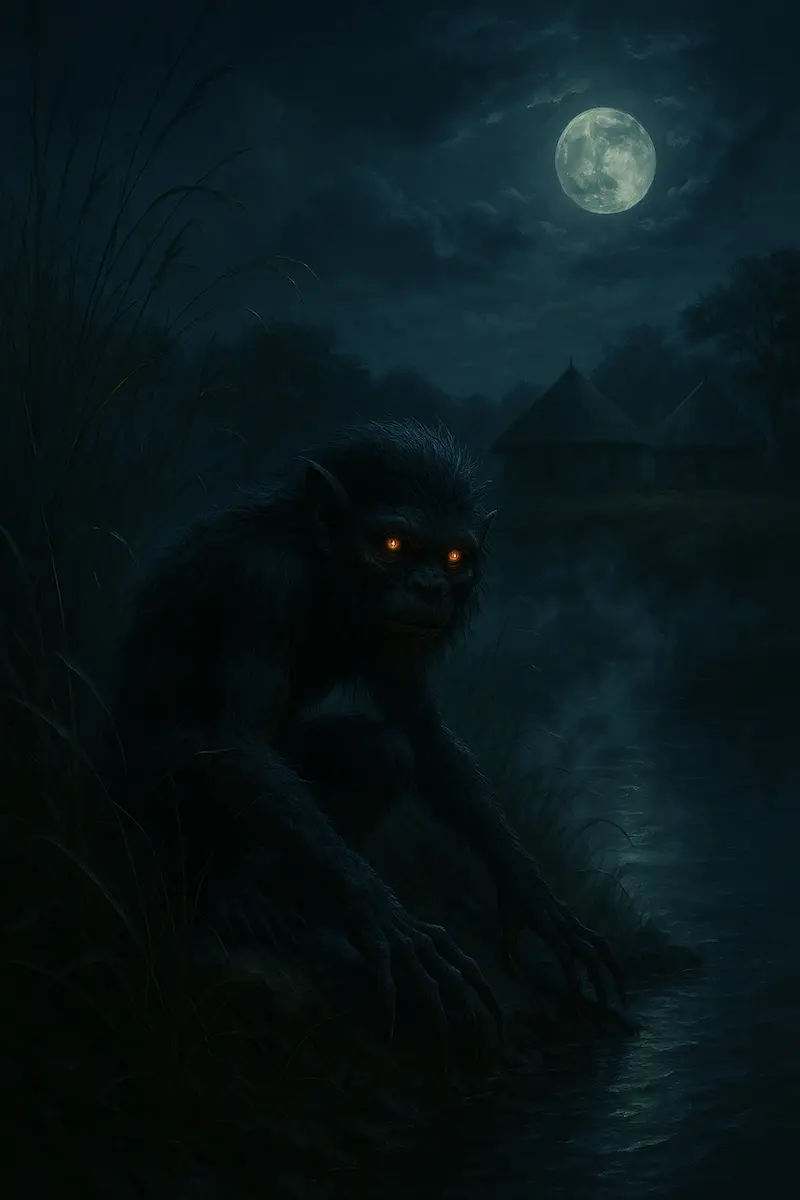Deep in the folklore of Southern Africa—especially among the Nguni peoples—lives the enduring legend of the Tikoloshe (also spelled Tokoloshe, Tikolosh, or Tonkolosh). This dwarf-like water spirit is known for its mischievous and sometimes malevolent nature, blamed for everything from harmless pranks to serious illness and even death.
Origins and Nature of the Tikoloshe
The Tikoloshe is described as a short, hairy creature with long claws and glowing eyes. It is said to be capable of turning invisible after drinking water or swallowing certain stones. According to some traditions, Tikoloshes are summoned by witch doctors using dark rituals involving graveyard soil or animal remains, and brought to life by driving a hot iron rod into the creature’s head.
Documented Encounters and Beliefs
In rural Southern Africa, sudden deaths or nighttime illnesses were often attributed to this creature. Historically, deaths caused by smoke inhalation in traditional huts led to beliefs that sleeping elevated above the ground—often by raising beds on bricks—could protect one from the Tikoloshe.
In the 1990s, South African doctors reported pediatric cases of unexplainable ailments. Some families believed Tikoloshes were responsible. In 2018, a man claimed to have captured a Tikoloshe, but the supposed creature turned out to be a shaved baboon—yet the fear and fascination remained.
Cultural and Psychological Impact
Among the AmaXhosa of the Eastern Cape, belief in the Tikoloshe is strong and deeply connected to witchcraft, fear, and mental health. Sangomas (traditional healers) or spiritual leaders are frequently called upon to protect households and communities.
Traditional Protection Methods
- Sprinkling salt around beds and doors
- Placing scissors or sharp objects under pillows
- Performing spiritual cleansing rituals
- Keeping the home clean and orderly
The Tikoloshe in Modern Culture
Today, the Tikoloshe continues to feature in music, horror films, and literature. It serves as both a folklore cautionary figure and a metaphor for the unseen dangers that linger in society—reminding us that belief shapes reality in profound ways.
Whether regarded as an evil spirit or a cultural explanation for suffering, the Tikoloshe’s legacy remains alive across generations.
Disclaimer:
This story is based on cultural folklore, historical references, and public beliefs. It may contain symbolic or mythological content that has evolved over generations. The narrative is shared for educational and entertainment purposes. Images are for illustration only.
